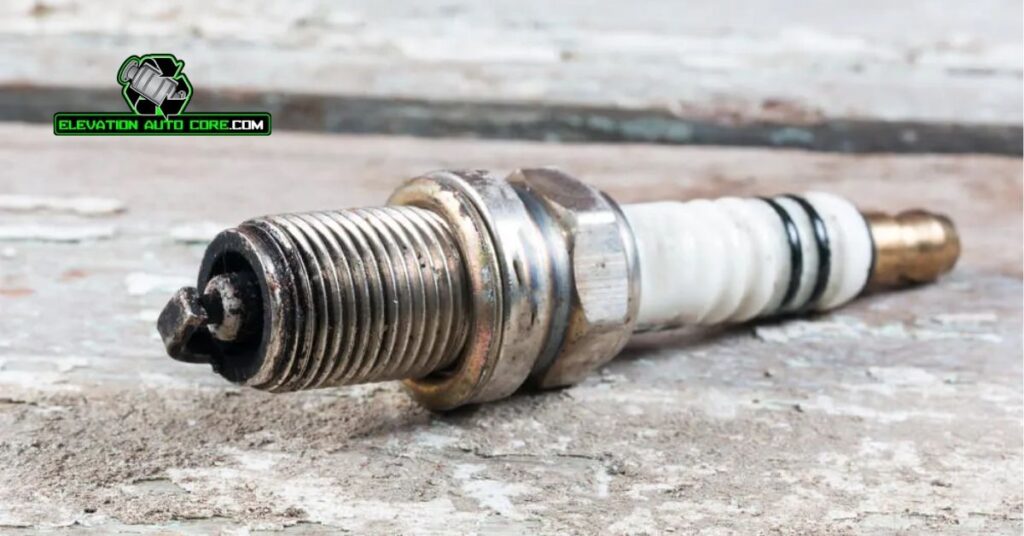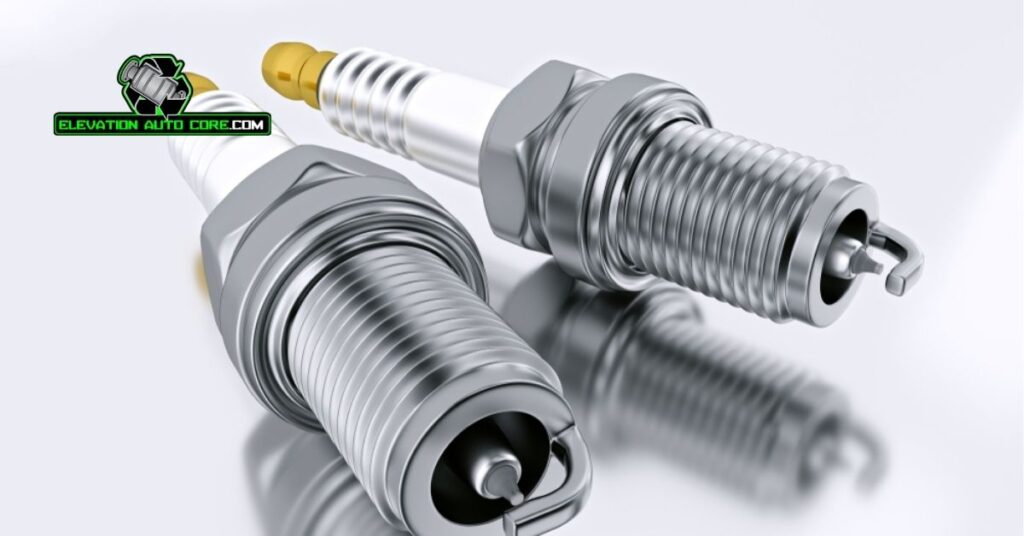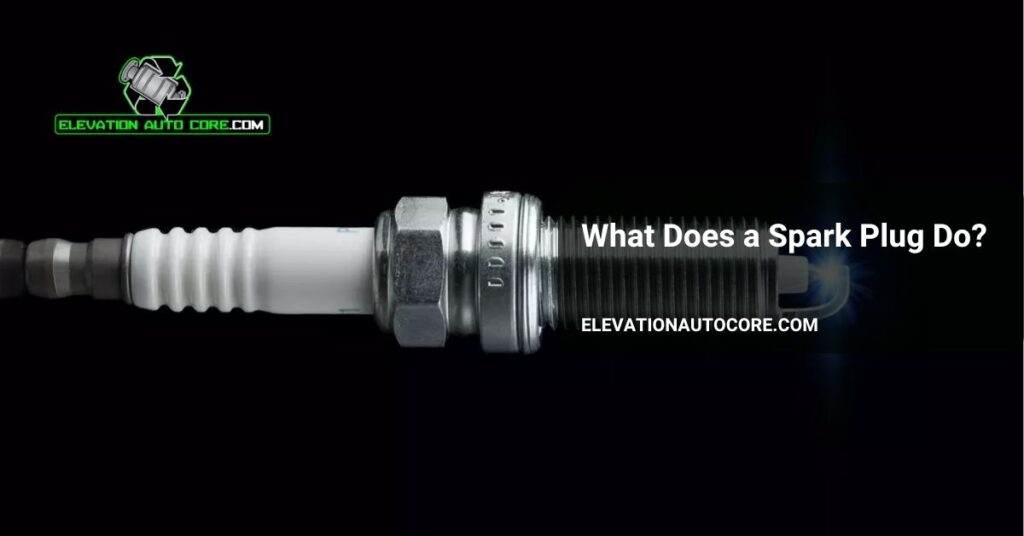What does a spark plug do in your car’s engine? This small but mighty component plays a critical role in igniting the air-fuel mixture, powering your vehicle with every drive. Without it, your engine simply wouldn’t start—stay tuned to uncover how this essential part keeps your car running smoothly.
Understanding The Basics Of A Spark Plug

A spark plug is a small yet critical component in an internal combustion engine. Its primary function is to deliver an electric spark to ignite the air and fuel mixture within the engine’s combustion chamber. This ignition process drives the pistons, producing the power needed to keep the engine running.
The central electrode of a spark plug generates the spark by creating a small electric arc. Surrounding the central electrode, an insulator prevents the electrical charge from escaping. At the base, a threaded metal shell secures the spark plug to the engine and provides grounding.
Each spark plug operates under extreme conditions, including temperatures exceeding 1,800°F, high pressure, and exposure to fuel residues. It must consistently perform over thousands of ignition cycles. Modern spark plugs are constructed with durable materials like iridium or platinum to ensure reliable performance and longevity.
Gaps between the electrodes are meticulously designed for proper spark generation. A well-calibrated gap ensures ignition efficiency, prevents misfires, and optimizes fuel consumption. Regular inspection and maintenance of spark plugs help maintain their performance, helping the engine operate smoothly.
How A Spark Plug Works

A spark plug converts electrical energy into a controlled spark that ignites the fuel mixture. It’s at the core of the combustion process, ensuring your engine powers efficiently.
Ignition Of The Air Fuel Mixture
High voltage from the ignition system moves through the spark plug. This creates a spark between the central and ground electrodes. The spark ignites the compressed air and fuel mix in the combustion chamber. Proper timing of this spark is critical for optimal engine performance.
Generating Combustion In The Engine
The ignition sets off a rapid combustion process. Expanding gases from the explosion drive the pistons downward. This mechanical energy powers the engine’s crankshaft, maintaining consistent vehicle motion. Spark plugs repeat this process thousands of times per minute under high stress to keep the engine running.
Key Components Of A Spark Plug
A spark plug is made up of precise components designed for efficient ignition. Each part plays a exact role in generating the spark required to start and run an engine smoothly.
Central Electrode
This electrode generates the initial electric spark. Positioned at the center of the spark plug, it connects directly to the ignition system. Advanced materials like iridium or platinum are often used to enhance durability and improve conductivity. The central electrode’s precise design helps ensure consistent ignition even under extreme temperatures and pressure.
Insulator
The insulator surrounds the central electrode to prevent energy loss. Made from high-strength ceramic, it shields the electrode from interference and helps maintain spark efficiency. Its resistance to heat and electrical conductivity ensures proper energy delivery within the combustion chamber. The material and shape of the insulator are critical for maintaining engine reliability.
Ground Electrode
Located opposite the central electrode, the ground electrode completes the circuit for spark generation. It attaches to the threaded metal shell and aligns with the central electrode to create a narrow gap. This gap plays a key role in spark intensity and combustion efficiency. Modern designs focus on optimizing its shape and durability to reduce wear and maximize performance over time.
Benefits Of A Properly Functioning Spark Plug

A well-maintained spark plug ensures your engine operates efficiently and reliably. Its performance impacts various aspects of your vehicle’s functionality.
Improved Engine Performance
A properly functioning spark plug ignites the air-fuel mixture at the optimal time, enabling smooth engine operation. This precise ignition reduces misfires and ensures consistent power delivery to the vehicle. Reliable spark plug performance helps the engine maintain steady acceleration and responsive throttle behavior. You’ll also notice reduced vibrations, particularly during idling, when sparks are delivered accurately and at the right intervals.
Enhanced Fuel Efficiency
Spark plugs in good condition optimize fuel combustion processes, minimizing energy waste. When ignition timing aligns correctly, the engine burns fuel more efficiently, reducing fuel consumption. This efficiency translates to improved mileage, saving you money and extending the time between refueling stops. Poorly maintained spark plugs, in contrast, can result in incomplete combustion, leading to higher fuel usage and increased emissions.
How To Know When To Replace A Spark Plug

Recognizing the signs of a worn spark plug ensures your engine performs reliably. Regular inspections and timely replacements can prevent engine damage and maintain efficiency.
Common Signs Of A Failing Spark Plug
Engine misfires often point to a failing spark plug. These occur when the air-fuel mixture doesn’t ignite properly, disrupting engine performance. Reduced fuel efficiency can also suggest a worn spark plug, as incomplete combustion increases fuel consumption. Difficulty starting your car, especially in cold weather, may indicate a weak or failing spark plug. Unusual engine noises like rough idling or knocking often stem from inconsistent ignition caused by poor spark plugs. A noticeable drop in acceleration or power under load could mean your engine isn’t firing optimally due to a faulty spark plug. A check engine light triggered by misfire codes might confirm spark plug issues, though you should consult a diagnostic tool or mechanic for accuracy.
Recommended Maintenance Schedule
Replace spark plugs according to your vehicle’s maintenance guide, typically every 30,000 to 100,000 miles depending on the type used. Copper spark plugs tend to last up to 30,000 miles, while iridium and platinum options often exceed 60,000 to 100,000 miles. Adjust intervals based on your driving habits, as stop-and-go traffic or towing accelerates spark plug wear. Inspect spark plugs during routine maintenance to check for damage, corrosion, or buildup. Cleaning isn’t always sufficient if electrodes degrade or gaps widen, so prioritize replacement for sustained performance.
Conclusion
Understanding the role of spark plugs gives you a clearer picture of how essential they are to your car’s performance. These small yet powerful components ensure your engine operates smoothly and efficiently, making them vital for reliable driving.
Regular inspection and timely replacement of spark plugs can save you from costly repairs and improve fuel efficiency. Focusing to their condition, you’re investing in your vehicle’s longevity and overall performance.







